Choosing the right motorcycle gloves
It's important to make the right choice...
We believe that every type of motorcycle and every type of rider deserves a specifically adapted glove. But that doesn't mean we can't offer more cross-disciplinary, multi-purpose products.
Our ambition is to offer you the widest possible choice, while enabling you to determine the ideal glove for... YOU.
To choose the right motorcycle glove for you, there are several factors to consider. Here's a detailed review!
1/ The type of motorcycle being driven.
If there are fundamental differences between motorcycles, it's for good reason. A track motorcycle doesn't have the same engine, chassis and suspension characteristics as a trail or motorcycle .
The same applies to FIVE motorcycle gloves. Every feature is tailored to the intended use and the category for which the product is intended.
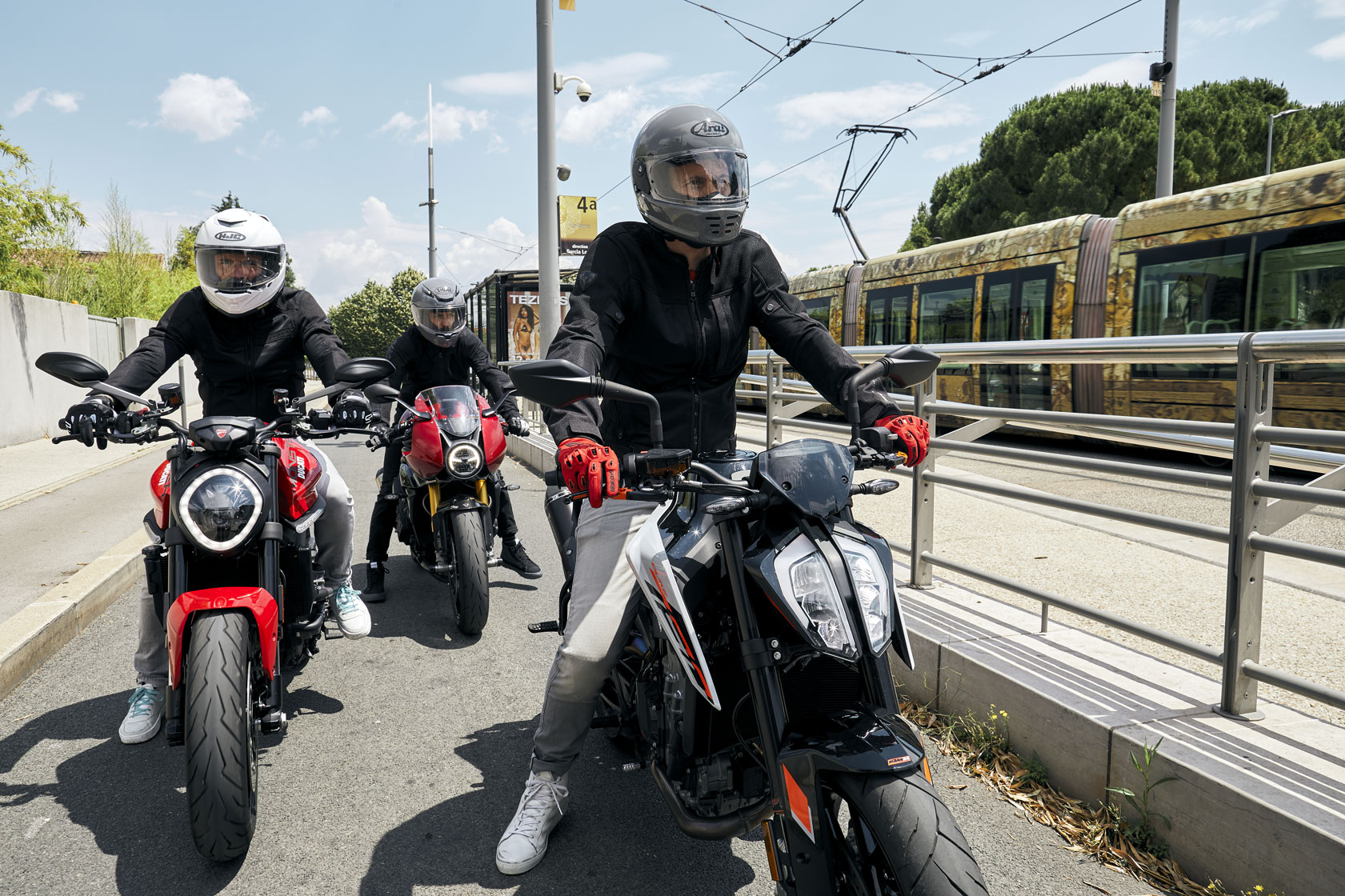
Three examples:
On a road or sport motorcycle - which, by definition, can only be ridden on asphalt, and on which the rider is exclusively seated - the aim is to protect the rider from the risk of falling at high speed, with helmet-inspired shells featuring rigid outer shells and flexible inner shells, or semi-rigid shells in the palm, as well as numerous reinforcements in leather or synthetic materials (TPU, TPR, etc.).
On a trail-adventuremotorcycle , which is used mainly on roads but also on trails, with many different riding positions for the rider, whether standing or sitting, the palm protection will aim to protect against falls on asphalt, with a large panel of flexible, abrasion-resistant Aramide, while facilitating vertical movements and changes of position. More comfortable in the standing position than a "slider" palm shell found on motorcycle road gloves.
On enduromotorcycle , which are mainly ridden in an upright position on the ground, in conditions that can cause the rider to perspire a great deal, the glove features ventilation components and protective elements designed to reduce the risk of injury from tree branches, stones, mud, etc., in natural environments.
It's therefore essential to analyze your needs according to the type of motorcycle you're using and your riding position preferences (mostly seated, mostly standing, or a mix of both).

2/ The season in which the motorcycle glove will be used.
Some bikers ride all year round, others only during the summer months. But there are four seasons: Spring, summer, autumn, winter. Each one has a different character (more or less pronounced) depending on the region of the globe or country (North or South) in which you find yourself. Take this into account when assessing your needs.
No glove can claim to be comfortable and perfectly effective all year round. That's why we recommend several pairs of FIVE motorcycle gloves, each adapted to the riding conditions you'll encounter throughout the seasons.
For motorcycle riding " most of the time ": standard motorcycle gloves.
Most of our gloves are designed for cross-country use from spring to autumn. Our standard glove models are designed for comfort and efficiency in dry weather and pleasant ambient temperatures (neither too hot nor too cold). They do not feature a waterproof membrane or thermal insulation.
Find our standard gloves on our website with the "summer glove" tag.
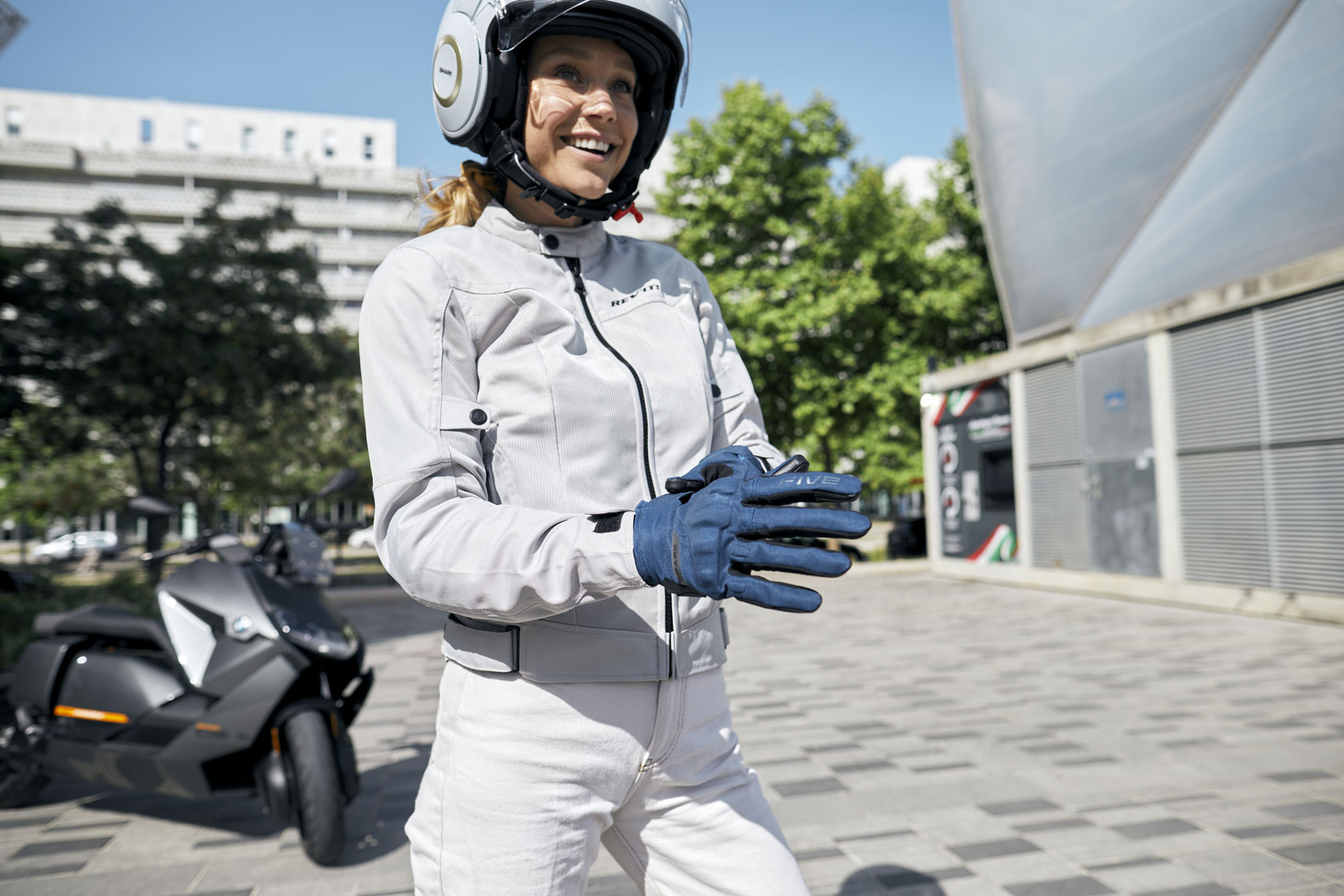
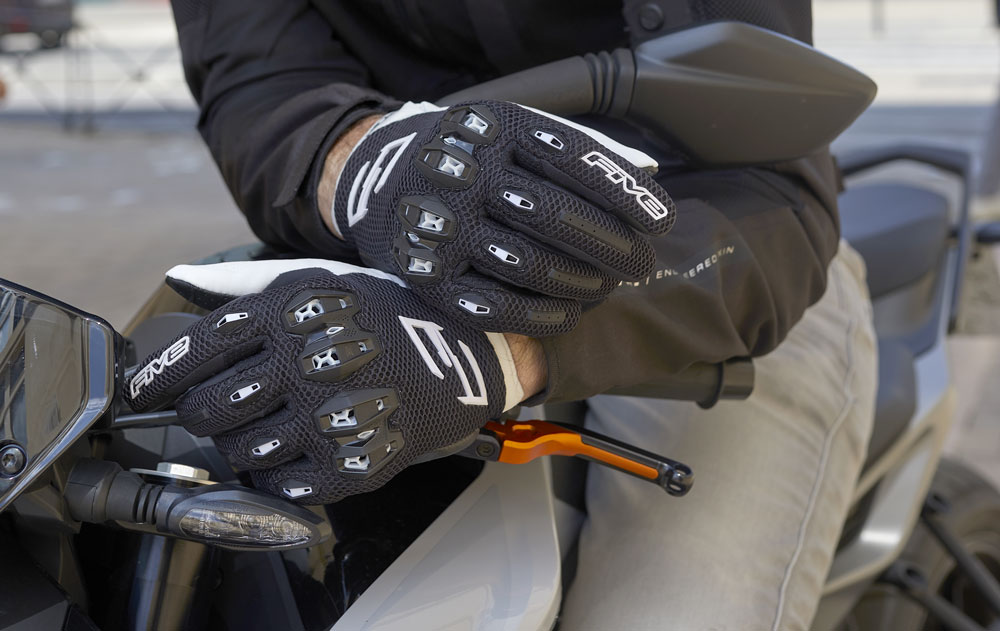
For motorcycle in summer or when it's hot: ventilated gloves.
For summer and hot weather, we produce specific ventilated motorcycle gloves, to promote air circulation and evacuation of perspiration. They are characterized by the integration of honeycombed fabrics, micro-perforated leather, and protective elements including vents or scoops to channel outside air into the glove.
You can recognize them by the AIRFLOW ending in their name.
Find our ventilated gloves on our website with the "ventilated" tag.
For motorcycle riding in cool or rainy weather: waterproof motorcycle gloves (or mid-season gloves).
The mid-season waterproof gloves found in each of our FIVE glove families are recommended for use in spring or autumn: when the weather may be cooler, or when the risk of rain is higher.
These are waterproof motorcycle gloves with a breathable waterproof membrane to protect against the rain. But without thermal insulation (apart from a few exceptions with light insulation), so as not to get too hot when temperatures remain mild.
The breathable waterproof membrane is like a plasticized, micro-perforated envelope, integrated inside, just below the glove's external structure, whose "pores" are large enough to allow the evaporation of water vapor formed by perspiration (it's said to be breathable), and narrow enough to prevent raindrops from penetrating (it's said to be waterproof).

The waterproof membrane also acts as a windbreaker, which is enough to make this type of glove more comfortable than a standard glove in cool weather, in the morning or evening, for example.
This membrane can be assembled in a number of different ways. It can be partly bonded or fully bonded to the palm. This affects the feel of the handlebars. Top-of-the-range fully bonded membranes may appear a little stiffer at first, but offer a better grip on the handlebars. They are therefore to be preferred.
The waterproof or mid-season motorcycle gloves in the FIVE collection are distinguished by the WP (for WaterProof) or GTX (for Gore-Tex) endings to their names.
Find our waterproof mid-season gloves on our site with the "mid-season" tag.

For motorcycle in cold weather: motorcycle winter gloves.
FIVE motorcycle winter gloves all have similar features, offering different degrees of effectiveness depending on their position in the range and their price.
Namely, a breathable waterproof membrane to protect against rain and keep hands dry (see above), enveloping thermal insulation to delay the effects of cold.
Thermal insulation is an insulating wadding that envelops the inner structure of the glove. A kind of synthetic down designed to trap air, it is the best insulator for conserving the heat naturally emitted by the rider's hand. It comes in different types and qualities. It is distinguished by its weight in grams per m2. (Ex: 170g, 80g, etc). A higher number indicates a thicker or denser wadding.
But the weight figure alone is no indication of insulating quality. The very construction of the thermal insulation and its assembly inside the glove influences its insulating capacity. Playing on different weights of wadding between the upper zone, the palm and the inside of the forks (between fingers), FIVE has innovated by creating a novel construction of thermal insulation called Thermo+, present on certain models.
Considering that air is the best insulator, we advise you to choose your winter glove looser rather than tighter. It's better to choose one size up than one size down from your usual size in standard gloves.
You can distinguish FIVE motorcycle winter gloves by the prefix WFX (for WINTER FIVE eXPERTISE) at the beginning of their name.
Find our winter gloves on our website with the "winter" tag.
For motorcycle in very cold weather: battery-heated motorcycle gloves.
For those who have to cope with more extreme cold conditions, or who want to face winter more serenely, we offer battery-heated motorcycle gloves. These gloves have the same features as classic motorcycle winter gloves (waterproof membrane and thermal insulation), but with the addition of an electrical resistance heating system integrated into the upper part of the hand, right down to the fingertips and the inside of the last phalanx. Each glove is powered by an integrated battery (2 to 6 hours' autonomy) or by a cable connected directly to the motorcycle (cigarette-lighter socket or battery) for unlimited autonomy.
You can distinguish them by the prefix HG (for HEATED GLOVES) at the beginning of their name.
Find our battery-heated gloves on our website with the tag "chauffants".

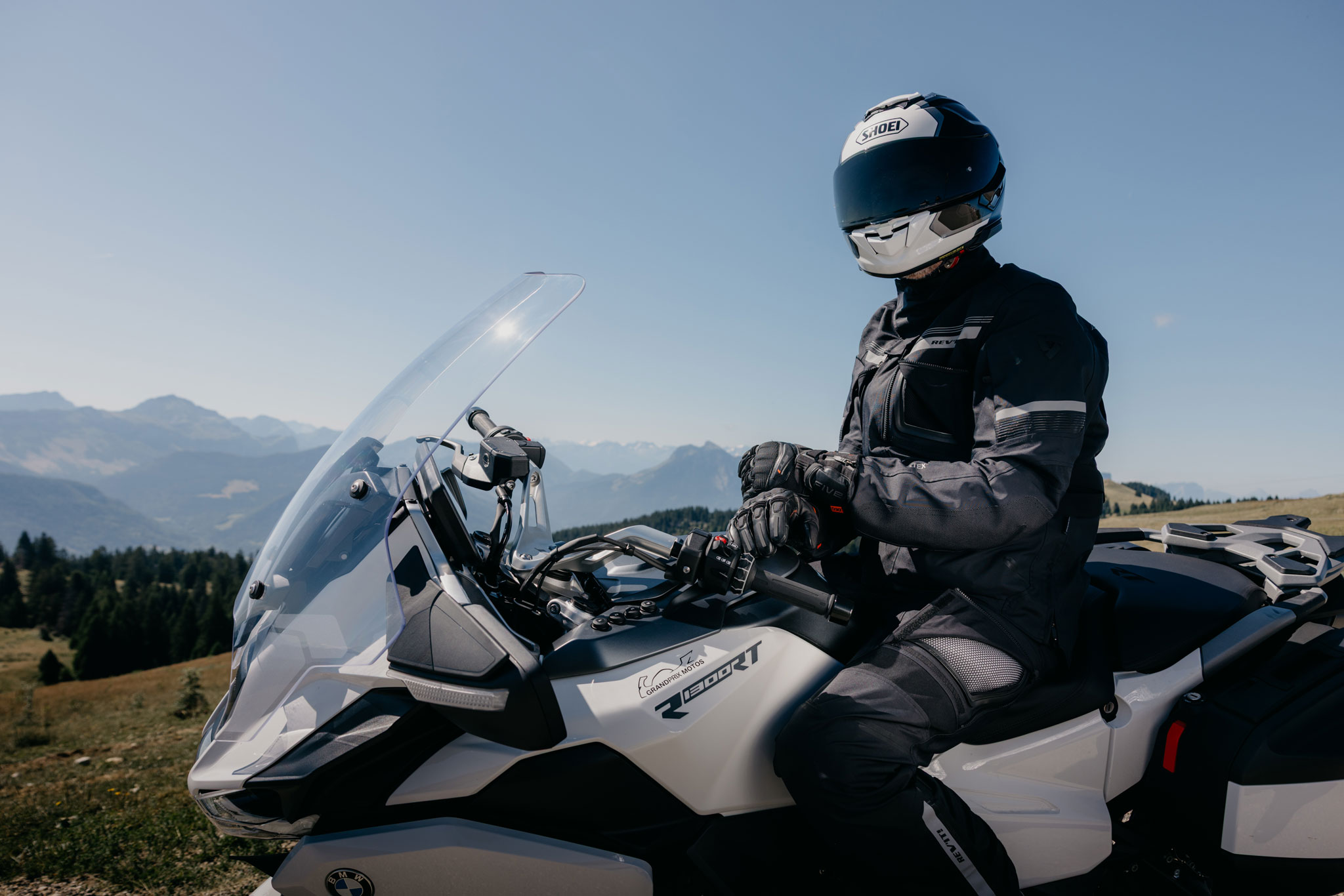
3/ Average distance covered.
You can ride a motorcycle for practical reasons, or for pleasure, or both. In urban areas or on long-distance trips. And this can influence the amount of time we spend on the handlebars.
You don't equip yourself in the same way for a daily trip of a few kilometers to work, for example, as for a long road or motorway journey.
In the first case, we'll be focusing on practicality, with a simple fastening system and a glove that's easy to put on and take off, lightweight and space-saving. In the second case, we'll be focusing on safety and long-distance comfort, such as waterproofing and protection.
Some motorcycle gloves are designed specifically for long-distance use, optimized for comfort and efficiency during long hours on the handlebars. Such is the case with our TOURING gloves.
4/ Long or short cuff?
If you use your motorcycle for short trips, you'll probably prefer gloves with a short cuff, which take up little space and are easy to put on and take off. They are often preferred for urban or suburban use (scooter, roadster...) or off-road use (trail-adventure, enduro...).
motorcycle gloves with long cuffs are preferred for road use or track riding, for obvious safety reasons, since they cover part of the forearm. They are often the preferred choice for winter use, as they allow the cuff to be placed over or under the jacket, to optimize waterproofing against cold and rain.
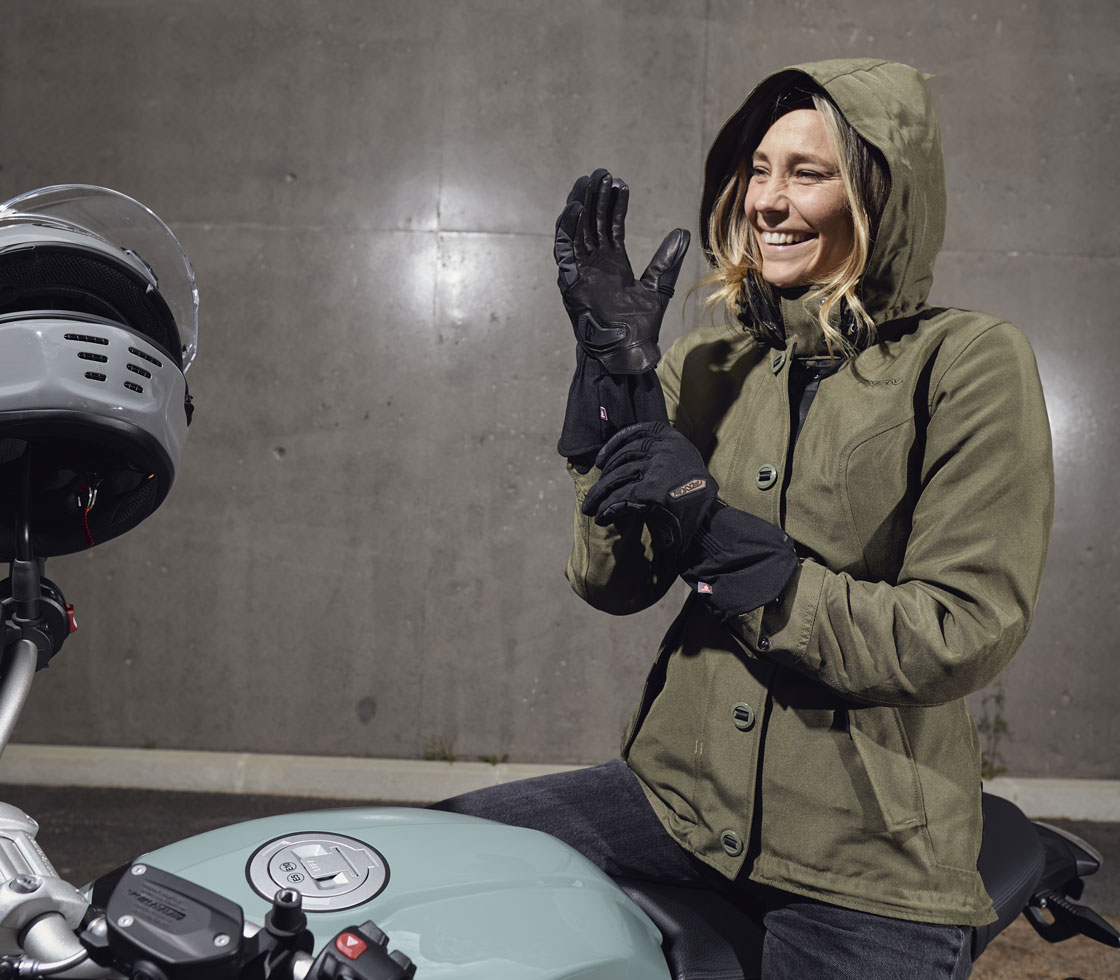
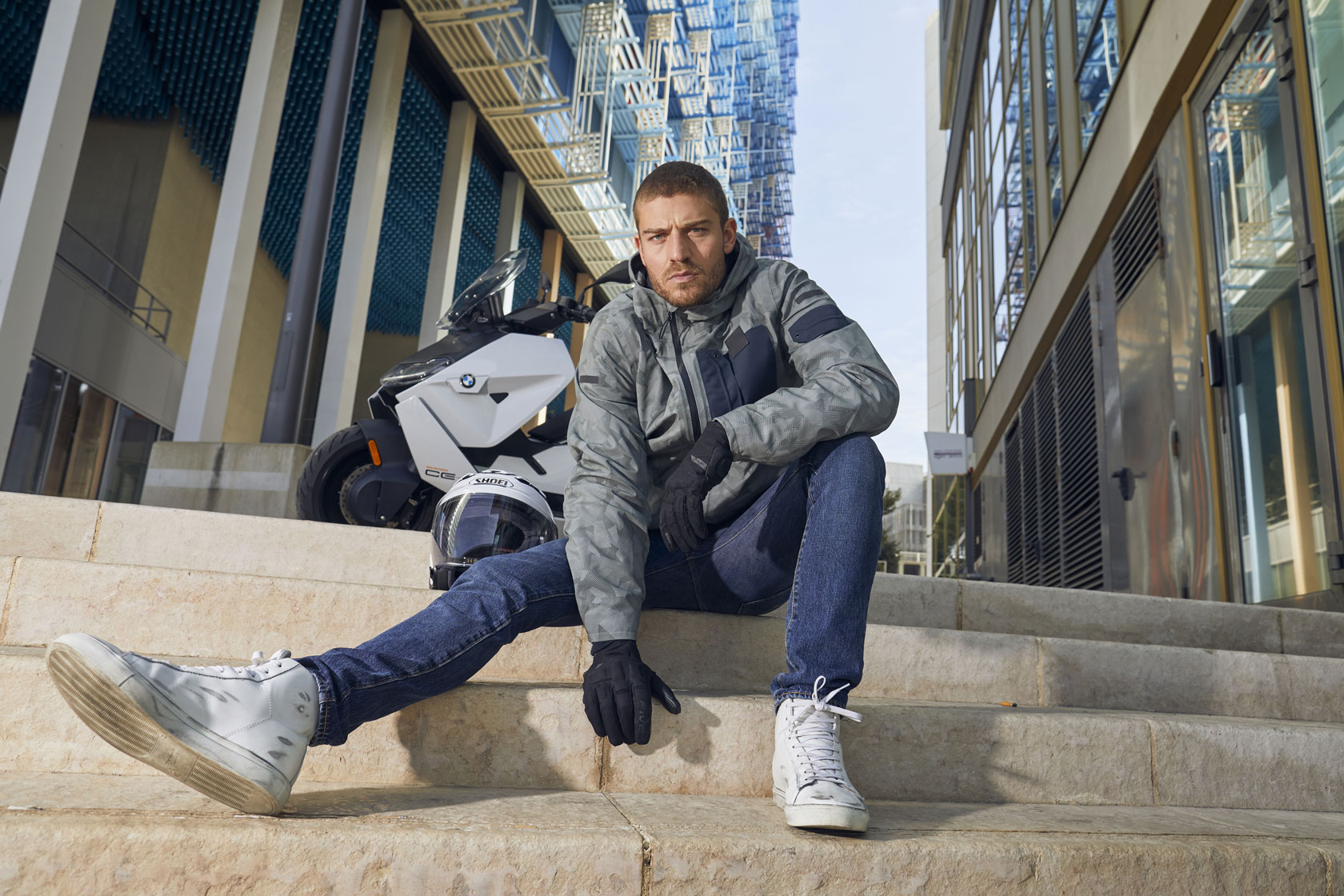
5/ Frequency of use (or when to change gloves)
Frequency of use is a decisive factor in the choice of motorcycle glove model, but also in the number of pairs to consider.
As personal protective equipment, a pair of motorcycle gloves is a "consumable" product that you're expected to wear on every motorcycle outing. In some countries, such as France, they are compulsory and must be specifically certified and CE motorcycle for use on public roads.
Due to the friction associated with their use, their exposure to perspiration, the repeated movements and stresses to which their structure is subjected at the controls of a two-wheeler, and their exposure to the elements (rain, wind, cold, heat, pollution), the simple normal use of motorcycle gloves inexorably leads to natural wear and tear. However, this wear accelerates considerably with repeated daily use.
Their protective qualities can be reduced by excessive wear. So don't wait until your gloves are damaged before replacing them. It's important to monitor the evolution of your gloves over time, and to identify any parts showing signs of wear or weakness that could limit their effectiveness in the event of an accident.
For example: the beginning of a tear, a seam that's starting to give way, a protective element that's deteriorating. All these aspects of natural wear help to identify when a pair of gloves has "seen its day" and should be replaced.
Just as you wouldn't consider wearing the same pair of shoes every day, you should plan to have several pairs of gloves if you ride very regularly. By alternating between several pairs, you'll considerably extend their lifespan. This will allow each pair of gloves to air-dry thoroughly between uses, and prevent them from being subjected to the same daily stresses (perspiration, stretching of the structure, which can lead to cracking or tearing...).
To put it simply, the more often you ride, the more we recommend alternating between several pairs of gloves. Even if this involves an initial investment, you'll come out ahead in the long run.
6/ Certification level and comfort/protection ratio.
No glove can fully protect you in the event of an accident. That said, FIVE gloves are designed to limit the risk of injury, and all meet CE motorcycle certification (with the corresponding label sewn inside featuring the motorcycle picto, mandatory in some countries) in three levels:
- CE ( motorcycle gloves without protective shell)
- CE KP1 ( motorcycle gloves with protective shells, good level of protection)
- CE KP2 ( motorcycle gloves with protective shells, superior protection)
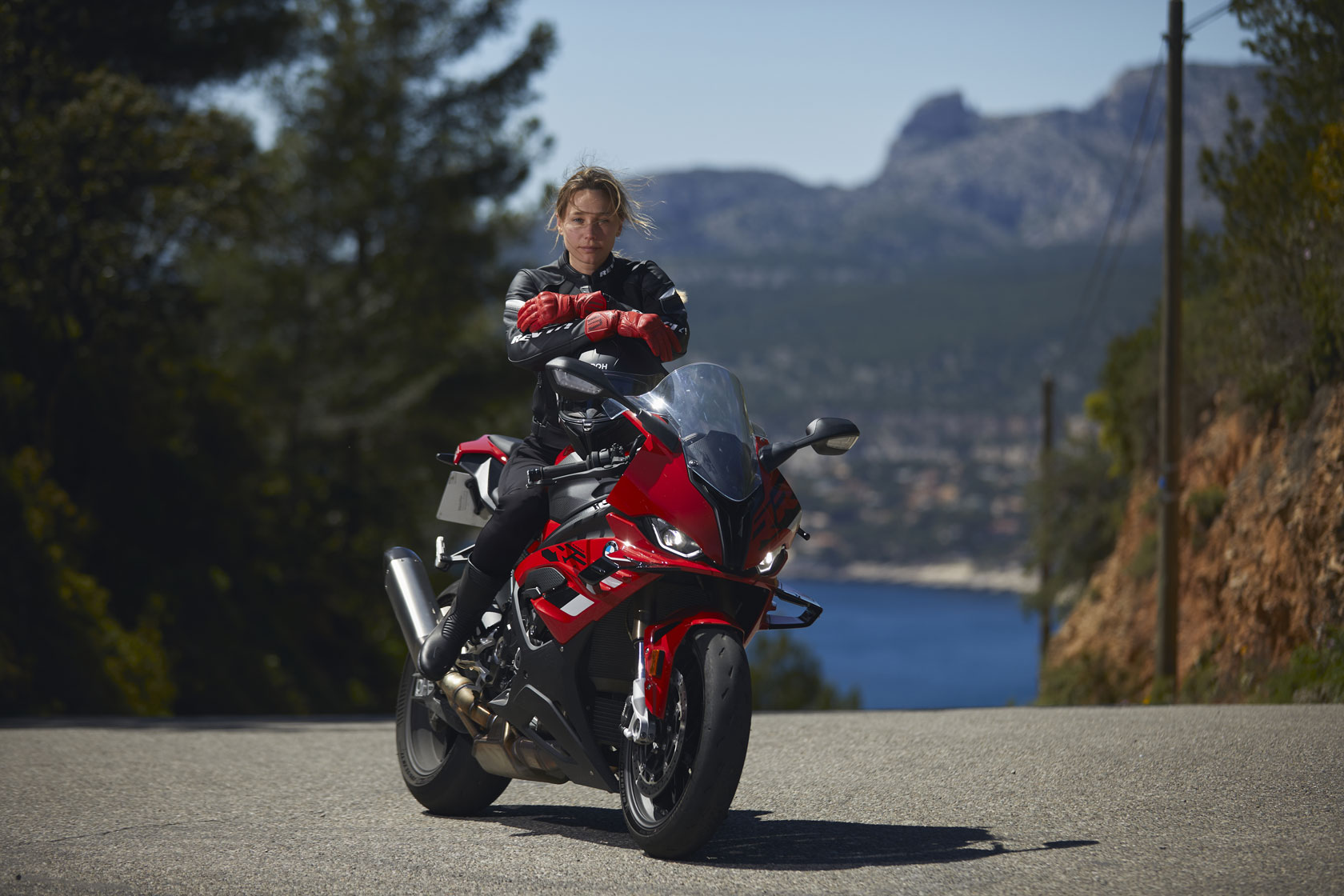
While the level of certification is a good indicator of the level of protection offered by a glove, since it indicates that it has successfully passed a number of mechanical tests (abrasion, tear, cut) and chemical safety tests (PH, etc.), before being stamped CE motorcycle Certified Glove, there are nevertheless differences between two gloves with the same level of certification.
In the same way that not all helmets meeting certification standards offer the same level of protection, not all gloves, even if CE KP1 certified, offer the same level of protection.
This is obvious, but the overall level of protection varies from one glove model to another, depending on the type of shells, reinforcements and materials used.
The same applies to comfort levels, which can vary from model to model, although the basic comfort level of FIVE gloves is well above average.
So it's essential to assess the protection/comfort ratio that best suits your use, or your preferences.
Do you prefer comfort or protection, or even other criteria such as aesthetics? Or are you looking for the best compromise? This can be the case as you move upmarket, as top-of-the-range motorcycle gloves often offer the best components in both areas, comfort and protection.
Knowing that our vocation at FIVE is to aim for the best compromise, and to make a protective glove as comfortable as possible, and to make a comfortable glove as protective as possible.
The easiest way to assess this is to try FIVE gloves in-store, without hesitating to compare them with each other and with the competition.
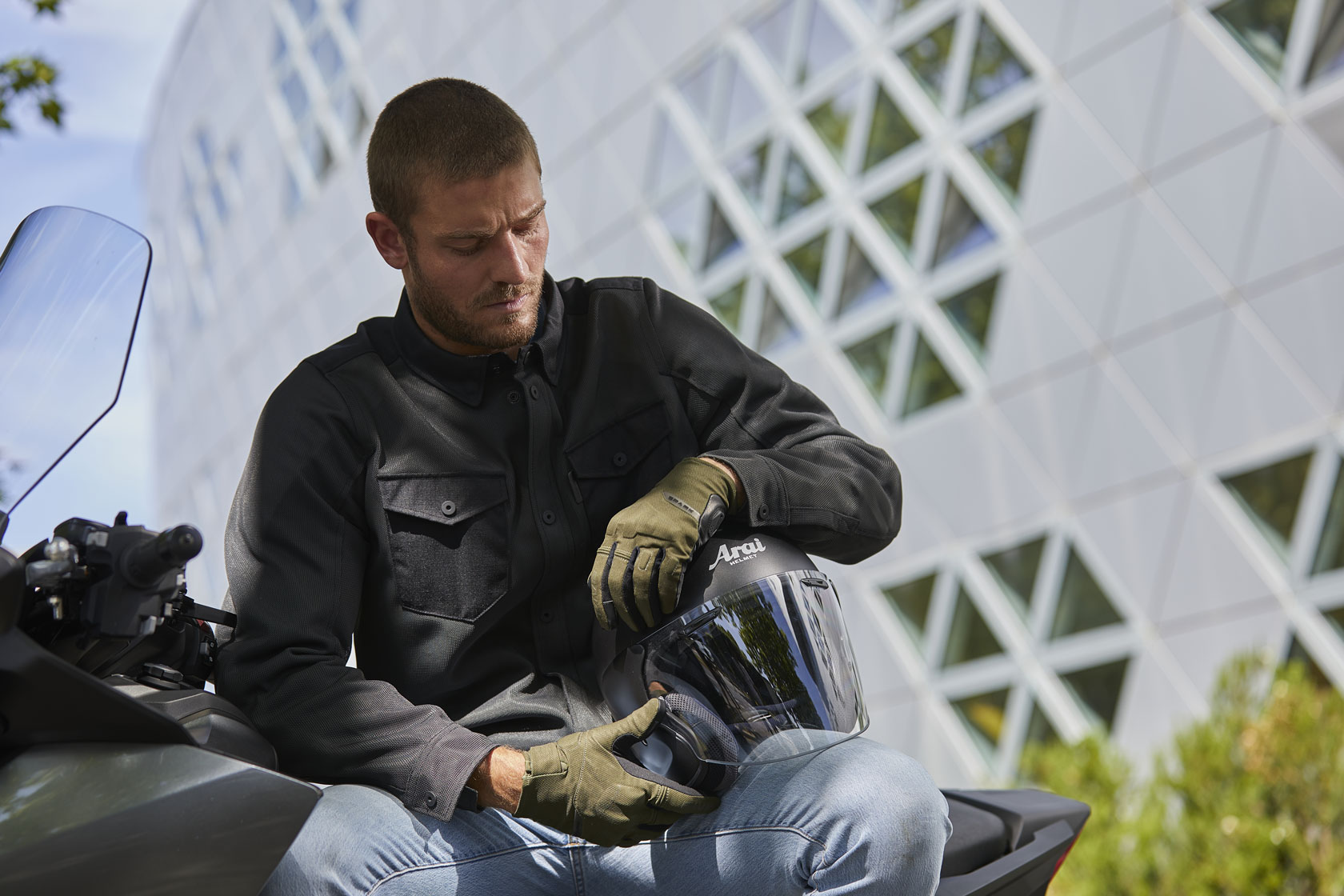
5/ Your budget.
Once you've considered all the aspects that should guide your choice (see above), there's one essential point: the budget you wish to devote to your pair(s) of motorcycle gloves.
You may start your search by prioritizing the notion of budget. If that's the case, don't hesitate to compare the products you can afford, to assess whether they meet your needs (with reference to the points mentioned above). And don't hesitate to choose a slightly more expensive glove model if it "ticks more boxes". It's often worth going upmarket. An extra ten or twenty euros can sometimes get you into a higher category and a higher level of performance. This small financial effort at the time of purchase can pay off in use, by bringing you greater comfort, performance or safety.
You'll find that there are motorcycle gloves at every price point. Including in the FIVE collection. Our prices range from around 30 euros to almost 450 euros. These price differences are explained by the nature of the glove's components. Whether it's a question of comfort, protection or practicality.
Rest assured, for the same price as the competition, a FIVE glove often offers more. In component quality, comfort, fit, protection and design!